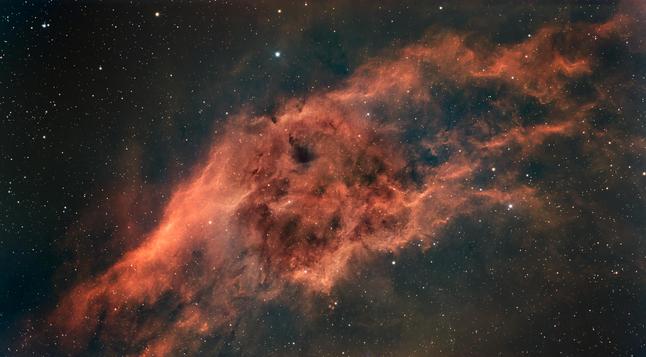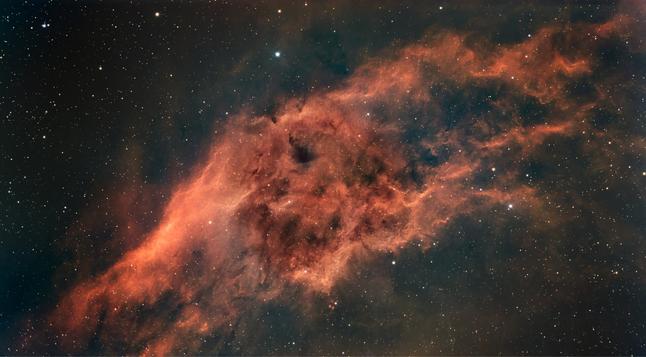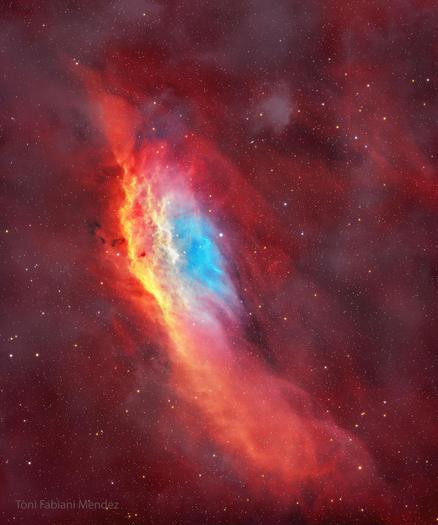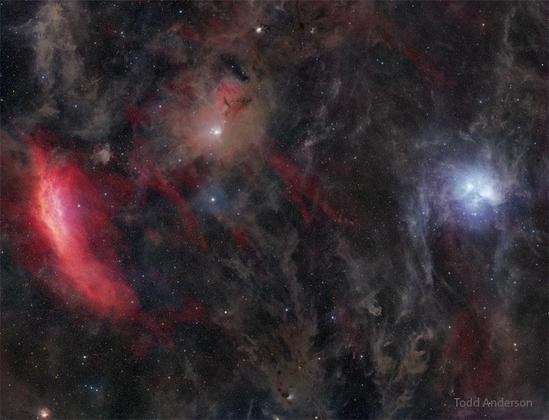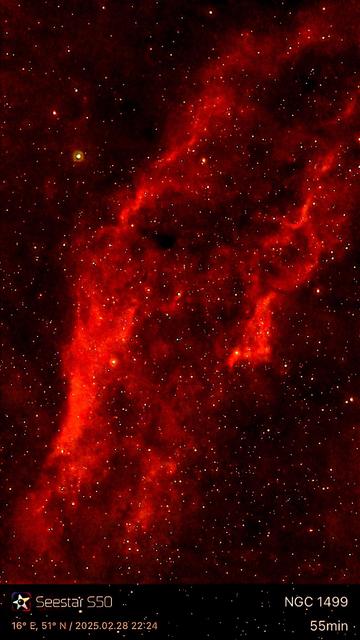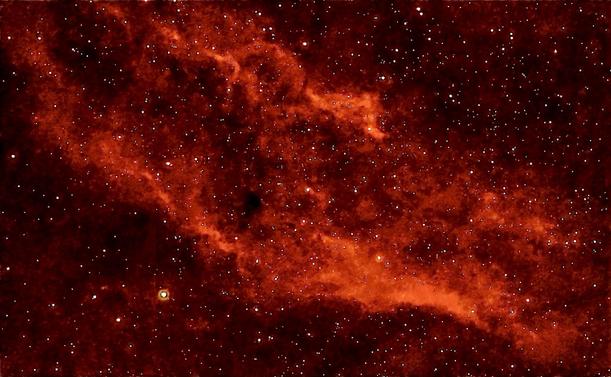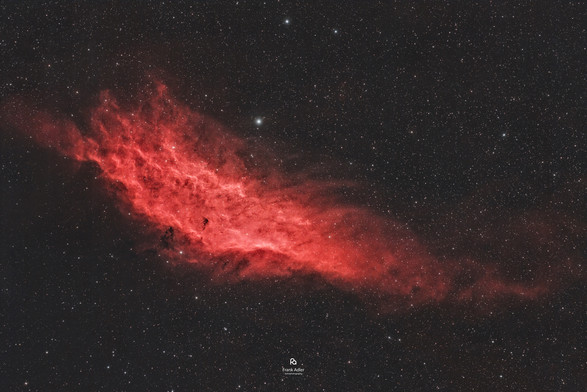The California Nebula.
Celestron NexStar Evolution 6 + ZWO ASI585MC Pro.
300mm, f2, 180 exposures of 60’’.
#telescope #telescopes #celestron #celestrontelescope #celestronnexstar #nexstarevolution #nexstarevolution6 #zwo #zwoasi #zwoasi585mc #astro #astrophoto #astrophotos #astrophotography #astrophotographer #spacephotography #astronomy #spaceexploration #nasa #universe #space #deepsky #deepspace #nebula #california #californianebula #ngc #ngc1499 #s220
#californianebula
Celestron NexStar Evolution 6 + ZWO ASI585MC Pro.
300mm, f2, 180 exposures of 60’’.
#telescope #telescopes #celestron #celestrontelescope #celestronnexstar #nexstarevolution #nexstarevolution6 #zwo #zwoasi #zwoasi585mc #astro #astrophoto #astrophotos #astrophotography #astrophotographer #spacephotography #astronomy #spaceexploration #nasa #universe #space #deepsky #deepspace #nebula #california #californianebula #ngc #ngc1499 #s220
Seven Sisters versus California
On the right, dressed in blue, is the Pleiades. Also known as the Seven Sisters and M45, the Pleiades is one of the brightest and most easily visible open clusters on the sky. The Pleiades contains over 3,000 stars, is about 400 light years away, and only 13 light years across. Surrounding the stars is a spectacular blue reflection nebula made of fine dust.
Image Credit & Copyright: Todd Anderson
Trochę mi się zachorowało[1]. Ale nie o tym miało być.
Wykorzystałem lukę w chmurach i ustawiłem Seestara na Mgławicę Kalifornia.
Trzeba było trochę pozmieniać ustawienia tak aby ją objąć, tzn. obrót o 90° i włączyć tryb mozaiki. Wczoraj, z uwagi na wspomniane chmury, nie ustawiłem maksymalnej wielkości celu (max to x2) tylko x1.4.
Niestety, mozaika nieukończona i jedyne co mogłem zrobić, to edytować plik .JPG na tablecie. Ale pozwoliłem sobie za to popuścić wodze fantazji.
55 minut.
#astrofotografia #niebo #kosmos #astrophotography #universe #astrofotografie #californianebula #ngc1499 #seestars50
[1] Poszedłem do lekarza, bo objawy były dość niepokojące. Dostałem skierowanie na morfologię i mocz. Po przeanalizowaniu wyników z Uncle Google jestem spokojny: nowotwór piersi lub jajników. 🫣
A not-so-wide angle view of the early winter Milky Way. The frame covers approximately 35 x 25 degrees. (This is the coverage of a 'normal' lens.)
A network of dark dust lanes crisscross all over the Milky Way. Some of the dark knots appear starless. (Next clear night I'll get a close telephoto look at the darkest knots.)
Because of red airglow drifting across the sky, I had some problems making the sky background neutral in color.
Note that image quality is not good in the corners. Star images have 'wings' because of various aberrations.
2nd image shows the original stack of 95 30-second exposures...brown sky, lots of vignetting in the corners.
3rd image shows the beginning of the process to remove vignetting and make the sky background a neutral color.
4th image shows more progress in flattening, and we can boost contrast more to bring out fainter details.
#NewMexico #Astronomy #MilkyWay #Astrophotography #Photography #Auriga #Jupiter #Pleiades #CaliforniaNebula
Weiter geht's! Dieses mal mit dem California Nebel - Sh2-220 / NGC 1499.
Volle Version: https://adfr.io/astro/20240109_ngc1499
#astrodon #astrophotography #astrophoto #narrowband #narrowbandimaging #Sh2-220 #NGC1499 #IC2005 #IC2027 #Menkib #californianebula
Clouds have been over me for a week or more, with more clouds in the forecast. So I decided to reprocess a few pics from last winter when I was even more unsure of what I was doing than I am today. Tried out a few things I've learned with PI & PS since that time.
#astrophotography #CaliforniaNebula
This is my first image of the California Nebula using the Sky-Watcher 130 PDS in combination with a dedicated astro camera and a duo narrowband filter.
Blog: https://smilingj.net/blog/2022/12/2022-12-12_california_nebula.html
#astrophotography #ngc1499 #californianebula #heq5pro #130pds #asi294mcpro #lextreme
